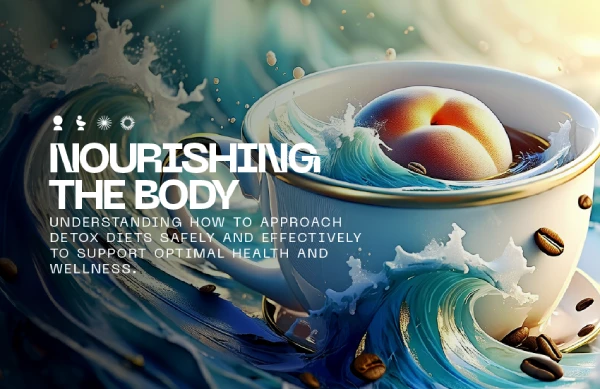Blog
The Use of Coffee Enemas: Detox Miracle or Health Risk?

Contents
Understanding coffee enemas
Historical context and cultural practices
Mechanism of action
For or against?
Risks and potential side effects
Alternative detox options
The lowdown on coffee enemas
Coffee enemas are a naturopathic detox treatment introduced a century ago by German physicians. The practice prospered due to perceived cleansing and detoxifying results.
Colonic irrigation is one of the oldest healthcare procedures. It features in the earliest medical literature and is incredibly widespread. Coffee enemas have a much shorter history, so the science is still out.
Not everyone is convinced, but many adherents attest to coffee enemas supercharging their detox. There are some benefits, but empiric evidence is scarce.
Read on to learn the latest about this intriguing treatment option.
Understanding coffee enemas
People boast an extensive history of using enemas to detox the body. They can help to flush out toxins or harmful bacteria. The procedure can also improve the microbial balance in your gut.
Water or saline enemas are a colon cleansing tool. Coffee enemas aim to detoxify the liver. Both can relieve constipation by increasing intestinal motility.
Naturopathic practitioners introduce a combination of brewed coffee and warm water into the rectum. The patient retains the caffeinated liquid to activate the liver. You can purchase specialized enema coffee; light or dark roast works.
Experts suggest starting with small amounts, a maximum of a teaspoon. Use a pinch of ground coffee if you’re sensitive to caffeine. Boil the mixture and allow it to simmer for 15 minutes.
Not much can go wrong when performing an enema, but a hot mix can cause issues. Ensure the blend is lukewarm and not too cold.
While the point of regular enemas is to encourage bowel movement, it defeats the object of coffee enemas. Retain the mixture for 15 minutes. It takes that long to get absorbed through the colon wall to activate the liver.
Historical context and cultural practices
Different civilizations around the world have long understood the detoxifying value of enemas. The Sumerians, Babylonians, Greeks, Indians, Chinese, and Egyptians all enjoyed a great cleanse.
The earliest mention of the practice is in ancient Egyptian medical literature. The Ebers Papyrus is the oldest medical document, dated to about 1550 BCE. It contains instructions on medications administered by enema.
The Olmecs used ritual enemas to induce trance states, sometimes with psychoactive substances.
There are also depictions of ritual enemas on ancient Mayan pottery. The seventh century artifacts show they also valued the treatment. Mayans also administered alcohol enemas.
By 600 BCE, the Babylonians knew the benefits and were administering clysters. The Greeks used it medically for constipation. Ancient Egyptians used enemas to treat anal piles or to introduce nutrients.
The implements and liquids often varied. There were some wild departures from the typical water dose. Some adherents swore by vinegar, donkey milk, cabbage juice, pig’s bile, and worse.
By the end of the 16th century, enemas were a cure-all. Patients treated everything from skin blemishes to aging. Most used it to counter constipation. The aristocrats of the upper class would take up to four per day.
Rumor has it King Louis XIV had over 2,000 enemas during his reign. He was fond of rose water or almond milk.
In 18th century Europe, people thought tobacco smoke enemas could revive drowning victims. Usage spread to treat typhoid, cholera, cramps, and respiratory failure.
By the 19th century, people were self-administering. The practice has waned since. It’s still used in medical settings, primarily to ease constipation.
The coffee enema first appeared in 1917. Scientists found the effects of coffee opened the bile ducts, releasing the toxins stored within. It also boosts bile production in the liver. Doctors first used them on tuberculosis victims and, eventually, cancer patients.
Coffee enemas really took off after Gerson therapy proved popular. It combines a vegetarian diet, coffee enemas, and supplements for minerals and vitamins.
Alternative medicine practitioners offer coffee enemas with other natural treatments. They claim it fights constipation, viruses, and digestive problems like irritable bowel syndrome. It’s also part of naturopathic treatments for cancers and liver problems.
Mechanism of action
Dr. Max Gerson began using coffee enemas as part of his Gerson treatment regimen in the 1930s. He figured the descending colon could absorb caffeine through its wall. The haemorrhoidal vein connects to the portal vein and then heads to the liver.
Coffee works by opening up bile ducts that store toxins. If you don’t eliminate these toxins, they can affect the liver and infect the blood, potentially compromising the entire body.
The toxic ingredients spill into the gastrointestinal tract for eventual excretion. Removal improves liver function and reduces the load. It can boost bowel function and energy. It could also fortify your health.
Researchers think coffee enemas increase the liver’s production of bile and improve the flow of bile through the gallbladder.
Kahweol and cafestol are other molecules in coffee that boost enzyme activity. They stimulate production of the antioxidant glutathione, a potent detoxifier. Trials show cafestol also suppresses growth and migration of some cancer cells.
The effects of coffee reportedly improve the efficiency and activity of the enzymes. They prevent cell damage from free radicals, peroxides, and heavy metals. The enzyme connects to toxins and flushes them out into the intestinal tract.
For or against?
Coffee enemas could relieve constipation, stimulate your immune system, and boost energy. Most adherents point to the immediate relief of multiple bowel movements. Clearing the colon leaves them feeling light, clear, and perky.
Proponents claim several other positive effects of coffee enemas.
-
Eliminate parasites
-
Remove heavy metals
-
Limit yeast development
-
Boost the immune system
-
Treat several illnesses, including autoimmune disease, depression, and cancers
-
Increase energy and vitality
In Thailand, coffee enemas remain popular for several ailments. Some locals treat migraines, obesity, chronic constipation, allergies, asthma, and even cancers.
Healthcare professionals insist it’s risky. They point to the potential for disrupting the bacterial balance. Enemas can remove both the bad and good bacteria, which could cause digestive issues.
There is very little scientific evidence for or against coffee enemas. Anecdotal support for the practice is extensive. There are some case studies that address problematic reactions, though. Further studies are required.
Doctors use saline enemas in specific medical situations, usually to relieve constipation. Sometimes, nurses need to empty the colon to introduce medication. You may require an enema prior to certain surgical procedures. Others are for diagnostic evaluation.
Risks and potential side effects
There are some risks associated with coffee enemas. Reported adverse reactions include rectal burns from hot enema fluid and caffeine overdose.
Documented evidence shows proctocolitis occurred in several case studies. An electrolyte imbalance or infections like polymicrobial enteric septicemia can be fatal.
A 2020 review of self-administered coffee enema case studies warns against it. Research could highlight whether qualified practitioners can produce more effective, safer outcomes.
These treatments promote removal of harmful bacteria but may also eliminate the good. It can upset your gut’s critical microbial balance.
Side effects, like gut irritation or dehydration, are also possible. Drink plenty of water after the procedure. Some note fullness, pressure, or cramping. A few feel shaky from the caffeine.
Researchers understand the effects of drinking coffee, but trials on the effectiveness of caffeine enemas are scarce.
Trials show coffee has several health benefits. It reduces the potential for skin, prostrate, colon, and liver cancers. A Harvard trial found a link between coffee consumption and reduced risk of death.
Coffee also reduces inflammation, which is responsible for several diseases. They include cancers, cardiovascular disease, depression, osteoarthritis, Alzheimer’s, and dementia.
Alternative detox options
Detox has become a buzzword for healthy living. It refers to various methods that may help to remove toxins from the body. These poisonous substances can be waste products that build up in the body. They include chemicals in the air, water, and ground.
Some diets or supplements claim to purge toxins. Chemicals, pollutants, or heavy metals are all poisonous and impact health. Processed foods can be toxic, too.
Proponents claim detoxification aids weight loss and elevates general health. Critics contend the body already has its own mechanism to eliminate waste products. You may not need a specialized diet, but it could boost or speed up the body’s natural reaction.
Many try detox diets lasting from a few days to weeks. Some eliminate specific foods, while others involve fasting, raw juices, and supplements. Others incorporate daily exercise, saunas, yoga, or meditation.
Detox diets become an issue when they provide less nutrition than you need. Low-calorie diets and rapid weight loss can be dangerous. Fasting might cause stress. Low calorie intake could link to side effects like headaches, fatigue, anxiety, and nausea.
LIVV Natural offers several treatments to detox your system. Our intravenous detox therapy supports liver detox and speeds up fat metabolism. Detox IV helps eliminate toxins throughout the body. It combines glutathione, magnesium, and a lipotropic agent called MIC.
Some of our mature clients prefer the Glutathione IV option. It contains a potent antioxidant that delays signs of aging and boosts detox. It’s made of amino acids and produced naturally in the liver. It regulates the immune system, repairs tissue, and produces proteins.
Chelation IV is for removal of heavy metals. It attaches to mercury, nickel, copper, iron, and lead and extracts them from the body.
The lowdown on coffee enemas
Coffee enemas have increased in popularity despite the lack of scientific agreement. Consult your healthcare professional first. Avoid this treatment if you’re sensitive to caffeine or take meds that may interact with coffee.
There are several natural detox alternatives to coffee enemas. IV treatments, curated diets, and supplements may be simpler, safer options. At LIVV Natural, we prefer a cautious approach in view of the limited wisdom.
Check out our extensive range of naturopathic treatments. Book a consultation today and start living your best life.
Author: Dr. Jason Phan NMD – Founder of LIVV Natural – Anti-aging – regenerative medicine – peptide therapy


